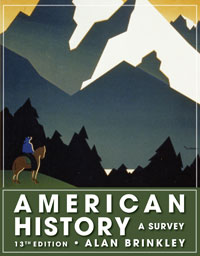1 A) national opinion was sharply divided about the war. B) national opinion was remarkably unified even though the war was going badly. C) national opinion was initially divided but soon was unified by a string of impressive victories. D) national opinion was ambivalent and fairly uninvolved due to the so-called phony war. E) national opinion was strongly against the war. 2 A) saving the Philippines from being invaded. B) thwarting the Japanese army's drive through Burma. C) stemming the tide of Japanese advances in the Pacific. D) dividing the last vestiges of American sea power from the Pacific. E) gaining American support for the war in the Pacific. 3 A) France. B) Sicily. C) the Balkans. D) Poland. E) North Africa. 4 A) favor both because they tied down the Axis forces. B) oppose both because they delayed the cross-channel invasion of France. C) oppose North Africa but favor Italy since it was closer to Germany. D) favor North Africa but oppose Italy because it was after the Stalingrad victory. E) favor Italy because North Africa was too far away for Allied troops to support the Soviet Union. 5 A) Hitler's blitzkrieg against Poland. B) Hitler's campaign to provide Germans with more living space. C) the American nuclear destruction of Hiroshima and Nagasaki. D) the American effort to prevent Hitler's extermination of the Jews. E) Hitler's campaign to exterminate the Jews. 6 A) decreased by 20%. B) stayed the same. C) increased by 10%. D) increased by 1000%. E) increased by 100%. 7 A) the Northeast B) the Midwest C) the Plains D) New England E) the West 8 A) never gained as much power as the War Industries Board of World War I. B) caused a failure to meet the nation's critical war needs. C) thrived under the political and administrative savvy of Donald Nelson. D) controlled all purchases by the nation's armed forces during the war. E) worked to fight price inflation. 9 A) Japanese Americans and African Americans. B) Mexican Americans and Southern whites. C) African Americans and Mexican Americans. D) Native Americans and Chinese Americans. E) Southern whites and Japanese Americans. 10 A) symbolized the erosion of some of the prejudice against women working in traditionally male jobs. B) symbolized a permanent change in the status of working mothers in the American economy. C) symbolized the continued categorization of women in jobs deemed appropriate for them by male bosses. D) showed how women's work was analogized to their traditional roles in the home. E) created permanent negative stereotypes of women in the workforce. 11 A) The Supreme Court upheld their evacuation from the West Coast. B) Reparations were finally paid to evacuees about forty years after the war. C) Many of the evacuees were United States citizens. D) Outside California, there was widespread public opposition to the internment policy. E) There is no evidence these Japanese Americans were engaging in conspiracies. 12 A) the atomic bomb. B) synthetic rubber. C) a system of coastal defenses. D) a system for dispersion of civilian urban population. E) relocation centers for Japanese Americans. 13 A) leading the southern conservative wing in Congress. B) managing Roosevelt's renomination campaign at the Democratic convention. C) coordinating the planning of the D-Day invasion. D) assuming the job of Supreme Allied Commander. E) chairing an investigative committee that exposed waste and corruption in wartime production. 14 A) pushed into the heart of Germany while Soviet troops bogged down in Poland. B) entered Germany from the west and Soviet troops entered Germany from the east and occupied Berlin. C) stalled along the Rhine River just outside Germany until they linked with Soviet forces. D) rushed toward Berlin to gain a "knock-out punch" on Hitler before the Soviet troops could arrive in the capital city. E) were unable to break into France through Normandy. 15 A) atomic fallout. B) ritual disembowelment. C) the lightning speed with which Japanese armies swept through Southeast Asia. D) a suicide mission in which a Japanese pilot purposely crashed his plane into an enemy ship. E) living space. 16 A) demonstrated that the Japanese fleet was still strong enough to slow the potential American invasion force. B) brought the Soviet Union into the Pacific War. C) all but destroyed Japan's ability to continue serious naval warfare. D) stopped the Japanese advance in the central Pacific near Guam and Midway. E) was the last major battle on the western front. 17 A) were united in their determination to continue the war. B) were united in their decision to seek peace. C) were split with some wishing to seek peace and others wishing to continue the fight. D) offered to surrender if they could keep control of Okinawa and Korea. E) decided to surrender after Hitler died. 18 A) New York City and Chicago. B) Tennessee, Washington, and New Mexico. C) Wyoming and Pennsylvania. D) Southern California, Georgia, and Oklahoma. E) Virginia and Maryland. 19 A) Khe Sahn B) Yokohama C) Tokyo D) Okinawa E) Nagasaki 20 A) in June 1941, right after Hitler attacked the Soviet Union B) in December 1941, right after the bombing of Pearl Harbor C) in February 1945, right after the Yalta Conference D) in February 1944, after a series of Allied victories in the Marshall Islands E) in August 1945, about a week before the Japanese surrendered 21 A) largely the same as it did when they left. B) completely transformed by wartime rationing. C) completely transformed by the economic prosperity the war created. D) as different as the European and Asian nations they had left behind. E) completely transformed by anti-war sentiment.





